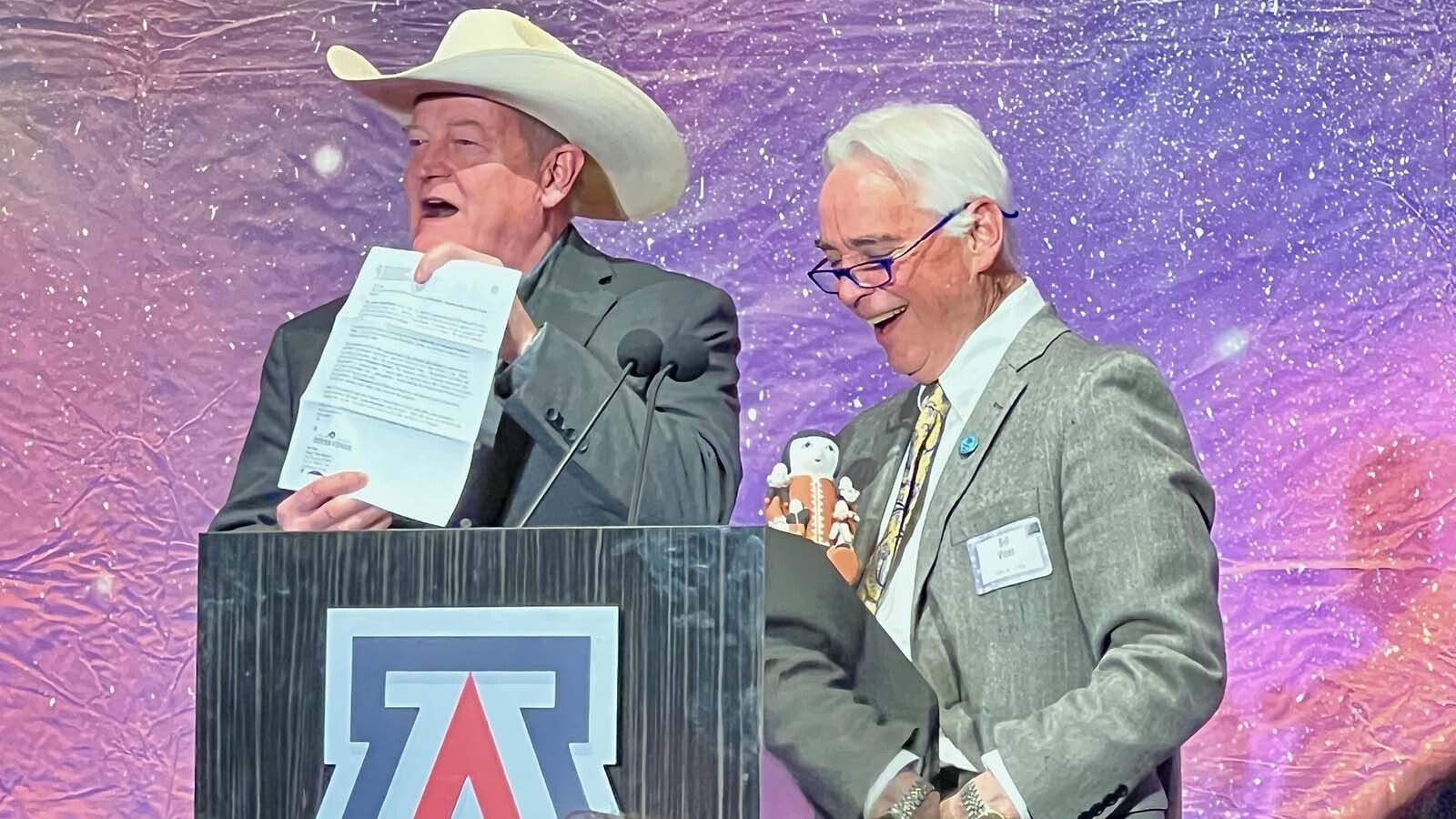The last remaining old steel truss bridge in Wyoming never really failed, it was retired and literally put out to pasture last week northeast of Sheridan.
The Wyoming Department of Transportation and Sheridan County Road and Bridge are replacing the original 115-year-old Monarch Bridge across the Tongue River that once saw thousands of miners and tons of coal safely across when it led to one of the state’s most important and largest underground coal mines during the early decades of the last century.
Sheridan WYDOT Resident Engineer Jake Whisonant said that according to known records, the structure was the “the oldest steel truss bridge of its kind on a WYDOT or county road system in the state.”
He said the visual aesthetics of the bridge and its history have led to an effort to preserve it on land adjacent to the river. A photo shows the bridge removed and sitting on concrete in a pasture-like setting.
“We don’t construct truss bridges now because the technology has advanced and there are cheaper and more efficient ways to do it,” he said. “But those old truss bridges look pretty cool.”
Because of the Monarch Bridge’s aesthetic and historical value, it’s also a testament to the local legacy of the Monarch Coal Mine it served for decades.
“Due its historic nature, we want to be able to preserve that along with some kind of assistance from the county and private landowners,” Whisonant said. “We are going to stage that bridge so people can still take a look at it and look into and learn about some of the historic value.”
The project includes a collaboration with the Padlock Ranch, which owns the property where the bridge will sit, and the Sheridan Community Land Trust, which has researched the history of the bridge and is providing language for a historical marker.
Bridge Cost: $2,100
Sheridan Community Land Trust History Program Manager Kevin Knapp said the bridge is interesting because it was ordered by county commissioners in 1909 as a convenient vehicle bridge that county residents could use to cross the river.
A story in the Sheridan Enterprise on Aug. 3, 1909, with a Monarch dateline reported: “The board of county commissioners awarded today the contract for a bridge on Tongue River near Alger to the Canton Bridge company to cost $2,100.”
In addition to a vehicle side of the bridge, there also a small railroad trestle side as well laid with mine car tracks that allowed the company to take coal across the river to the tipple and into the railroad cars.
Knapp said the mine cars may have been hauled by a horse or mule initially, but probably quickly a transition would have been made to small electric locomotives that could fit inside the mine shaft.
“With the Acme Power Plant, all those coal camps were electrified pretty early,” he said.
The bridge would also have had a stop nearby for the interurban line that provided transportation between the mines in the area and Sheridan.
In its heyday, Monarch boasted a population of 800 people, and the underground mine produced 5 million tons of coal a year. A lot people walked and rode across the bridge over the years.
Knapp said even after the mine closed, people still lived in Monarch and used the bridge. The mine officially closed in 1953.
The property now is owned by Padlock Ranch, but eight to 10 vehicles still use the bridge daily.
Worn Out
Whisonant said a temporary bridge was put in place before of removing the old old. He characterized the 115-year-old structure as ready for retirement.
“It had made a good run, but pretty much the whole bridge was in various stages of structural decay from the trusses themselves to the concrete structural support that was holding the bridge up,” he said. “So, it had definitely reached the end of its useful life.”
The replacement bridge will be a “typical standard spec bridge design” that will have a similar span in terms of length, but meet modern engineering specifications and design standards. Substructure on that bridge involves driving steel piles in the ground.
As an engineer, Whisonant said seeing the old concrete and riveted steel makes him think that there were some struggles involved in putting the bridge in place so many years ago. And those installers did not have the kind of technology today for measurement and surveying.
“It’s pretty amazing that they were able to construct something that would hold up that long,” he said.
For Knapp, he said the bridge is amazing in that it never was put on on the national historic registry as many others were and now are gone, but this bridge functioned until the day the temporary bridge was put in place.
“It kind of outlasted them all,” he said.
Potential Treasures
Knapp said another interesting thing about the bridge is that over the years and through the various flood events the locals would put try and embed pieces of machinery, wagons, and whatever on the side of the river to prevent erosion.
“There is actually some stuff that we have found under the bridge,” he said. “We’re hoping the contractor can help us out. There is maybe a mine car down there, and old wagon. Our interpretive site might end up having more than just the bridge.”
WYDOT District 4 spokesperson Laura Dalles said the $2.5 million project is being funded through the Bridge Replacement Off System which allows local government agencies to tap into federal dollars through the state. Since those dollars flow through the state, WYDOT is overseeing the project.
Plans call for the new bridge to be completed sometime this fall.
Dale Killingbeck can be reached at dale@cowboystatedaily.com.










